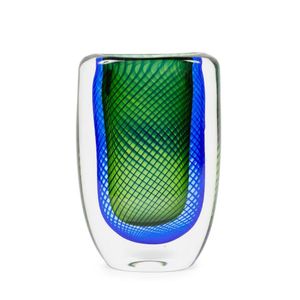
Kosta Sommerso Vase by Vicke Lindstrand, Circa 1960
A Kosta optical effect sommerso vase by Vicke Lindstrand, circa 1960, the heavy cased vase in blue, green and clear colours with a spiral decor creating a lattice effect inscribed to the polished pontil, Kosta LH1588, 17 cm high, 11 cm wide, 5.5 cm deep
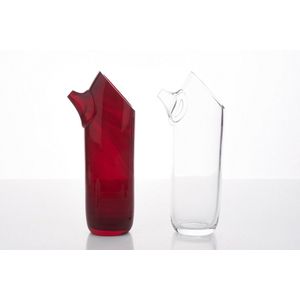
Vicke Lindstrand Kosta Hand Blown Glass Pitchers, c. 1960
Vicke Lindstrand (Swedish, 1904-1983), Two Pitchers, c. 1960, for Kosta, hand blown clear and ruby glass, signed and numbered to the undersides (2), height 29 cm
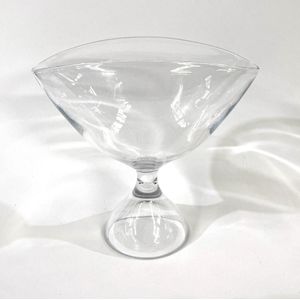
Vicke Lindstrand Kosta Boda Clear Glass Comport (20cm)
A Vicke Lindstrand for Kosta Boda clear art glass oval comport, height 20 cm

Vicke Lindstrand Sommerso Vase
A Kosta glass vase designed by Vicke Lindstrand, c.1959 tall ovoid flat sided. Emerald and sapphire in clear sommerso with deep blue threads creating a lattice pattern effect. Engraved mark. Lh 1591, height 28 cm

Kosta Art Glass Footed Bowl by Vicke Lindstrand
A Vicke Lindstrand art glass footed bowl made for Kosta the oval deep bowl finely engraved with feathers with hourglass form waisted and domed foot, engraved marks. Note Lindstrand worked for Kosta as an art director with his own studio from 1950 - 1973,…
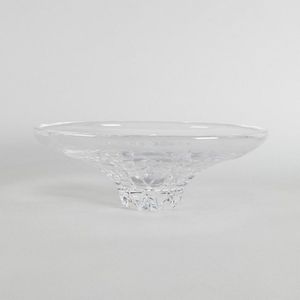
Cut glass bowl with leaf design by Vicke Lindstrand
A Vicke Lindstrand for Kosta Boda cut glass bowl, a large bowl with cut leaf design. Inscribed 'Kosta 75614 Lindstrand' to base. Height 12 cm, depth 32 cm

Lindstrand & Orrefors Glasswares
A Vicke Lindstrand for Kosta Boda paperweight and an Orrefors glass bowl, both with etched manufacturer's marks to base. Largest height 6.5 cm, width 18 cm
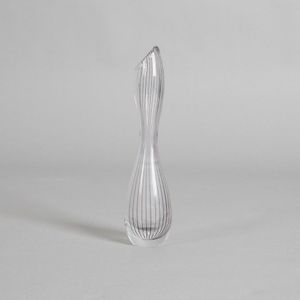
Vicke Lindstrand Kosta Boda Glass Vase - 26cm Height
A Kosta Boda glass vase designed by Vicke Lindstrand, etched marks to base. Height 26 cm

Kangaroo Etched Glass Bowl by Vicke Lindstrand
A cased glass pedestal bowl for the Australian market by Vicke Lindstrand for Kosta, Sweden, the amber glass deeply etched with a continuous frieze of kangaroos, signed 'Lindstrand 1970' to base, Kosta label, diameter 16 cm, height 13 cm

Red, White, and Clear Zebra Vase by Vicke Lindstrand
Vicke Lindstrand for Kosta glass zebra vase, in red, white and clear glass, with stamp and engraved numerals to base, height 19 cm

Kosta Boda Green Glass Bud Vases by Vicke Lindstrand
A pair of Kosta Boda green glass bud vases designed by Vicke Lindstrand (1904-1983) with company mark on base Height 9.5 cm each

Goldfish Engraved Clear Glass Vase by Kosta, 1950
A Kosta clear glass vase, circa 1950. Engraved goldfish design by Vicke Lindstrand or Elis Berg, signed to base. Height 24 cm. A/F - minor scratch to base.

Kosta Glass Vase with Blue Undercap by Lindstrand
Kosta glass vase by Vicke Lindstrand in clear glass with blue undercap, acid etched stamp to the base & engraved 'Lh1131/Hd90'. Height 23 cm

Vicke Lindstrand Clear Glass with Deer Engraving
Kosta glass clear by Vicke Lindstrand of triangular shape engraved with deers in a forest scene, signed to the base. Height 17 cm

Vickie Lindstrand's Jonah & Whale Etched Glass Sculpture
Kosta Boda Jonah & whale by Vickie Lindstrand with a solid body etched with an intaglio cut figure of Jonah, engraved signature & numbered 92407 to the base, with original sticker. Condition good, minor wear to the base. Length 33 cm
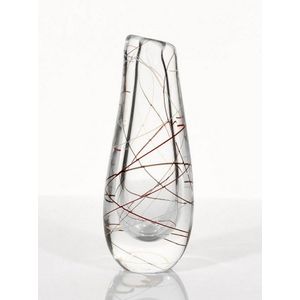
Abstract Art Glass Vase by Vicke Lindstrand for Kosta Boda
Vicke Lindstrand (Swedish, 1904-1983). art glass vase produced by Kosta Boda, clear glass with abstract white, red and brown circular lines, stamped underneath 'Lindstrand, Kosta'

Lindstrand Striped Art Glass Vases (Pair)
Vicke Lindstrand (Swedish, 1904-1983). art glass vases produced by Kosta Boda, red and white stripes, marked underneath 'Lindstrand, Kosta' (2)
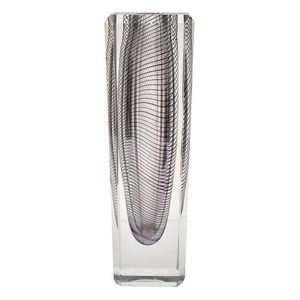
Vicke Lindstrand-designed Kosta Boda vase (1958)
A Kosta Boda vase designed by Vicke Lindstrand. A Kosta Boda vase, circa 1958, designed by Vikke Lindstrand

Medieval Woodland Vase by Vicke Lindstrand
Vicke Lindstrand for Kosta: clear art glass vase with etched medieval figures in woodland landscape. c1960. Height 31 cm, width 24 cm

Misty Trees Glass Vase by Vicke Lindstrand
Vicke Lindstrand, trees in the Mist vase, Sweden c. 1951, coloured glass, manufactured by Kosta, Sweden, signed with acid stamp to underside
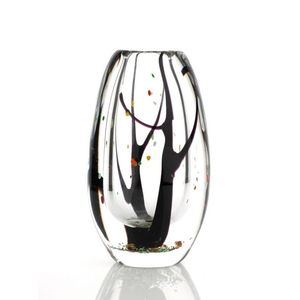
Kosta Glass Autumn Vase with Internal Decoration
Vicke Lindstrand, Autumn vase, Sweden, clear glass with internal black, orange, red and green decoration, manufactured by Kosta, Sweden, signed with acid stamp to underside. Height 16.5 cm

 Loading more...
Loading more...